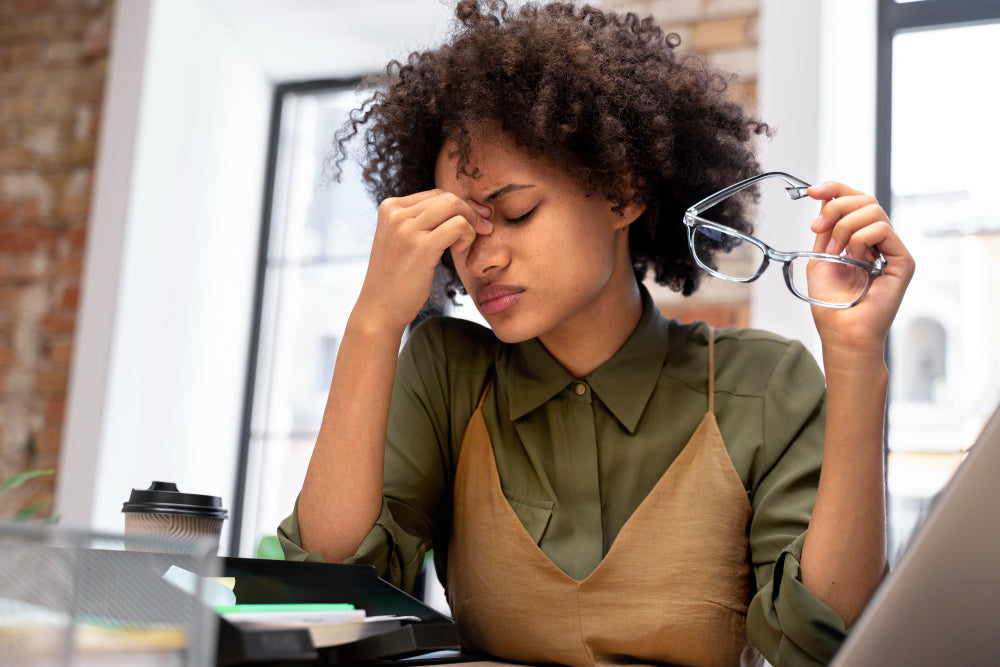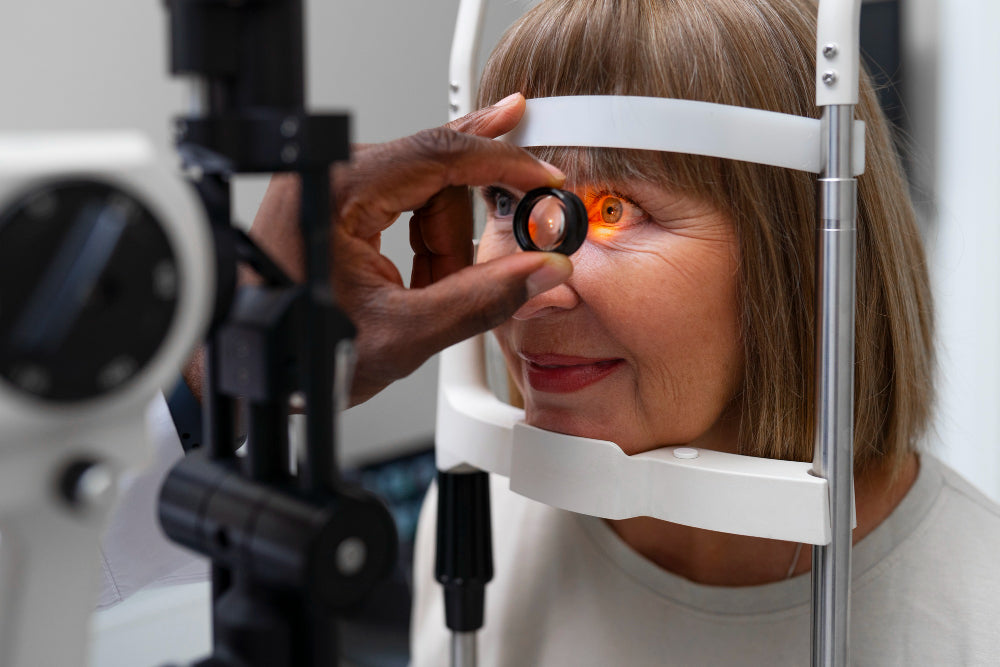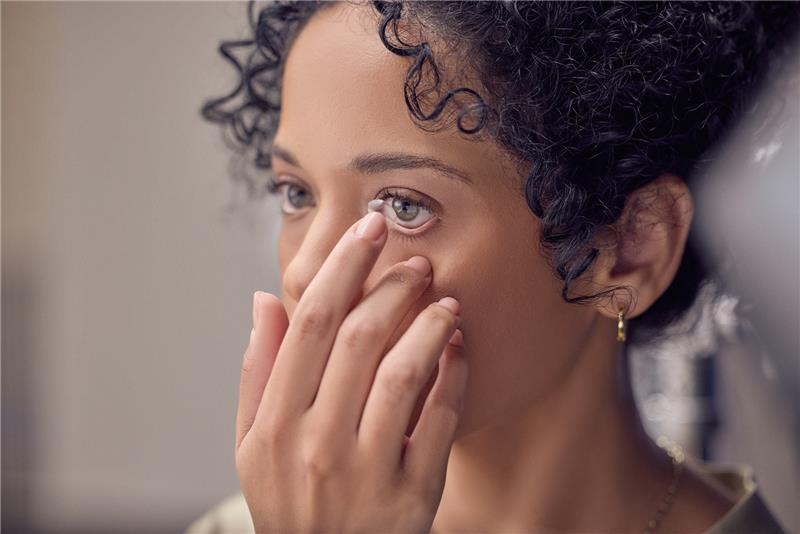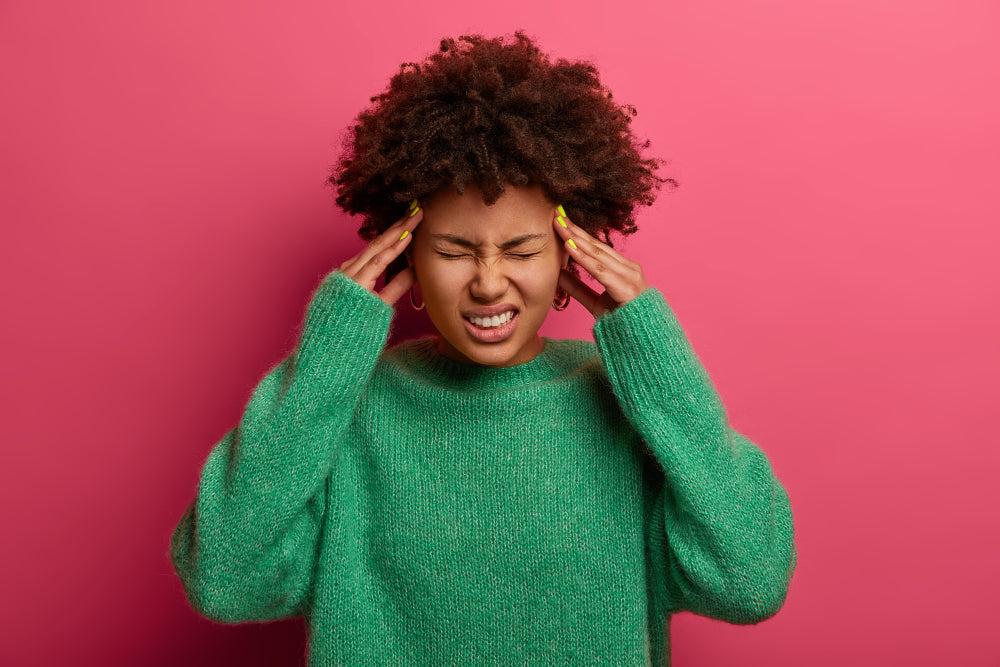Have you ever stared at a screen so long that your eyes felt like sandpaper? You're not alone. Imagine hammering away at your computer all day, managing properties, answering emails, and tackling endless to-do lists. Now, your vision is blurry, your head is throbbing, and your eyes feel like they are full of sand.
The big question is, how long does eye strain last, and what can you do about it?
Fortunately, digital eye strain is typically temporary. It often only lasts a few hours before you should feel back to normal. It's important to note, though, that this depends on whether or not you give your eyes a break.
With screen time at an all-time high, studies show that over 58% of adults experience digital eye strain. Understanding how to deal with this modern-day annoyance is more crucial than ever. This guide will provide actionable recovery tips and simple yet effective prevention strategies while debunking common myths.
We'll understand recovery time, symptoms, and solutions. Let's dive right in and get your eyes feeling fresh again!
What Is Eye Strain? Symptoms, Causes & Types
Eye strain, medically termed asthenopia, occurs when your eyes tire from intense use. This use can come from reading, driving long distances, or staring at screens. It's a common condition, not a disease, and rarely serious.
It happens when the muscles around your eyes work harder than usual. We're discussing a common condition that, while usually not serious, can significantly impact daily comfort and productivity.
Types of Eye Strain
Eye strain can be categorized into several types, depending on the underlying cause:
-
Digital Eye Strain occurs when one spends long periods looking at screens, such as computers, smart TVs, smartphones, or tablets.
-
Accommodative Eye Strain occurs when your eyes struggle to focus, especially when you frequently shift your gaze between objects at different distances.
-
Environmental Eye Strain: Triggered by external factors like dry air, poor lighting, glare, or exposure to allergens.
Understanding the type of eye strain you're experiencing can help you take the proper steps to relieve discomfort and protect your eye health.
Causes and Symptoms of Eye Strain

Primary Causes of Eye Strain
The following factors can cause eye strain:
-
Prolonged use of modern-day digital devices like computers, smartphones, and tablets, often called digital eye strain, is a leading cause.
-
Exposure to poor lighting conditions, whether too bright or too dim or dealing with glare, can contribute significantly.
-
Uncorrected or undiagnosed vision problems, such as astigmatism, can strain the eyes further.
-
General fatigue or physical and mental stress may also make you more susceptible to eye strain.
How to Recognize Eye Strain
Common symptoms indicating eye strain include:
-
Soreness or fatigue in the eyes
-
Burning or irritation
-
Dryness in the eyes
-
Blurry or double-vision
-
Headaches
-
Sensitivity to light
-
Difficulty concentrating
These symptoms occur because your eye muscles work continuously without adequate rest, and you may blink less frequently when focusing on screens or detailed tasks. While these signs often point to digital eye strain, they can also indicate other underlying eye issues.
If you notice any of these symptoms, take a break from your present activity to allow your eyes to relax. If the discomfort persists for more than a few hours, consult an optometrist for a comprehensive eye exam to rule out other potential problems.
Does Eye Strain Go Away?
Yes, eye strain is typically not a serious condition; in most cases, symptoms fade once your eyes get the rest they need. Discomfort like soreness, dryness, or irritation usually disappear within a few hours—provided you take regular breaks and reduce screen time.
However, if you continue to push through the discomfort without giving your eyes a break, the symptoms can linger much longer. In some cases, fatigue and irritation may persist for several hours or even days. That's why it's crucial to let your eyes get well—brief, consistent breaks can make all the difference in preventing prolonged strain.
How Long Does the Eye Strain Last? Science-Backed Recovery Timelines
Okay, let's answer the burning question: How long does eye strain last? The duration varies depending on several factors. For most people, mild eye strain resolves within a few hours after you stop the activity that caused it. But if you continue poor habits — like excessive screen time without breaks — eye strain can last for days and, in some cases, become chronic.
Factors Influencing the Duration of Eye Strain

Several factors can affect how long eye strain lasts and how quickly you recover:
-
Severity of Strain: Mild discomfort may resolve within a few hours after resting your eyes, while chronic or intense pain can persist longer, primarily if the underlying cause isn't addressed.
-
Underlying Health Conditions: Pre-existing eye issues, such as dry eye syndrome or uncorrected vision problems, can prolong recovery and make symptoms more persistent.
-
Environmental Triggers: Continued exposure to screens, poor lighting, glare, or other environmental stressors can extend the duration of eye strain by preventing your eyes from getting the rest they need.
-
Age and Overall Eye Health: Older adults or individuals with compromised eye health may experience longer recovery times, as their eyes may be less resilient to strain.
Addressing these factors, such as taking regular breaks, improving lighting, managing underlying conditions, and practicing good eye care, can help reduce the duration and severity of eye strain.
Typical Recovery Times
Recovery from eye strain varies based on severity. For instance:
-
Mild cases often resolve within a few hours to a day with rest and basic remedies.
-
Moderate cases may take one to three days and typically require more active care, such as soothing eye drops, screen breaks, and improved lighting.
-
Chronic eye strain, however, can persist for weeks and is frequently tied to unaddressed vision problems or ongoing exposure to stressors like poor ergonomics or excessive screen time.
Can Eye Strain Last for Days?
Yes, it can, especially if you're constantly glued to digital screens without giving your eyes a break. Prolonged strain may persist for days and signal an underlying issue, such as untreated glaucoma, migraines, or other vision impairments.
Caution: If your symptoms last longer than three days, consult an eye care professional to rule out more serious conditions.
Can Children Also Get Eye Strain?
A common misconception is that children can't get eye strain. Children are just as vulnerable to eye strain as adults, sometimes even more so.
With the rise in screen time from online learning, video games, and digital entertainment, kids are frequently exposed to the same visual stressors as adults. Like adults, they can experience symptoms like headaches, blurred vision, and eye fatigue without proper breaks and eye care habits.
How to Speed Up Eye Strain Recovery
Don't suffer in silence — there are several effective ways to relieve eye strain and promote faster recovery.
Immediate Relief Tactics
-
The 20-20-20 Rule states that every 20 minutes, look at something 20 feet away for 20 seconds. This simple exercise soothes your eye muscles and helps prevent fatigue.
-
Warm Compresses & Eyelid Massages: Applying a damp, warm cloth to your closed eyes for a few minutes can soothe tired eyes. Gently massaging your eyelids also stimulates tear production and relieves tension.
-
Lubricating Eye Drops: Use over-the-counter artificial tears to relieve dryness and irritation. Preservative-free options like Optase Intense Dry Eye Relief, available at Vision Source Rio and Vision Source Heights, are best for frequent use.
-
Cold Compresses: A cold compress can reduce discomfort and swelling if your eyes feel puffy or sore.
When to See Your Optometrist
Suppose your eye strain symptoms persist beyond one week despite resting your eyes and making lifestyle adjustments. In that case, you should see an optometrist to rule out more serious underlying conditions.
Contact your optometrist immediately if you experience vision loss, severe pain, flashes of light, sudden changes in vision, or eye trauma, as these can indicate serious or sight-threatening issues that require prompt evaluation and treatment.
Preventing Eye Strain: Long-Term Solutions and Healing Strategies
The most effective way to address eye strain is by adopting preventive habits in your daily routine.
Daily Habits for Healthier Eyes

-
Screen Brightness/Contrast Adjustments: Adjust your screen's brightness and contrast to align with the ambient light in your room, reducing unnecessary strain.
-
Corrective Lenses/Blue Light Glasses: Wear the correct prescription lenses if needed. Blue light-filtering glasses can help reduce digital eye strain from screens and are available in prescription.
-
Avulux Lenses: If light triggers migraines for you, Avulux Lenses, available at Vision Source Rio and Vision Source Heights, can nip that migraine in the bud. Available in nonprescription, prescription glasses, and as a clip on, Avulux lenses may be just what you need to provide overall comfort in your work day.
-
Anti-Glare Screen Protectors: Use anti-glare filters on your devices to minimize reflections and glare.
-
Ergonomic Workspace Setup: Position screens at arm's length and slightly below eye level. Adjust lighting to minimize glare and avoid overly bright or dim environments.
-
Hydration and Omega-3-Rich Diet: Stay hydrated and include omega-3 fatty acids in your diet to support eye health and reduce dryness. No tolerance for fish? Try our PRN Omega 3 fish oil supplement, available at Vision Source Rio and Vision Source Heights.
-
Regular Eye Breaks and Exercises: Practice eye exercises like blinking, rolling your eyes, and shifting focus between near and far objects to relax eye muscles and prevent strain.
-
Improve Air Quality: Avoid dry air by using a humidifier and limiting exposure to irritants like smoke or excessive air conditioning.
-
Regular Eye Exams: Schedule annual eye exams to detect and correct any vision problems early and ensure your prescription is current and maximized for your profession.
Environmental Tweaks
-
Optimal Lighting: Avoid harsh overhead fluorescent lights. Instead, use lamps with adjustable brightness to create a comfortable visual environment.
-
Screen Positioning: Keep your monitor about an arm’s length away and position the top of the screen at or just below eye level. This helps maintain a natural head and neck posture while reducing strain from excessive eye movement or glare.
By consistently following these preventive strategies, you can significantly reduce your risk of developing eye strain and maintain better overall eye health.
Tech Tools & Apps
-
Blue Light Filters: Apps like f.lux, Night Shift, Iris, and Twilight can reduce blue light emission from your devices, especially in the evening. These tools automatically adjust your screen's color temperature based on the time of day, helping to minimize eye strain and improve sleep quality. Many of these apps allow you to customize the intensity and schedule of the blue light filter, making them suitable for various devices and operating systems.
-
Pomodoro Timers: Using timers based on the Pomodoro Technique (around 25 minutes of focused work followed by a 5-minute break) can encourage regular breaks and reduce digital eye strain. Apps like EyeLoveU and Eye Saver remind you to take breaks and combine blue light filtering with break scheduling for comprehensive eye care.
Incorporating these tech tools into your daily routine can significantly reduce eye fatigue and maintain overall health.
FAQs: Your Eye Strain Questions Answered
Q1: Can eye strain last for days, even after rest?
Yes, if you return to the same training activities without addressing underlying issues.
Q2: Why is my eye strain lasting weeks?
It could be due to uncorrected vision problems, chronic dry eye, or persistent exposure to triggers.
Q3: Does eye strain cause headaches?
Yes, eye strain can often lead to tension headaches.
Q4: Can stress prolong eye strain recovery time?
Absolutely. Stress can exacerbate eye strain and slow down recovery.
Key Takeaway: Use Your Eyes Wisely
So, how long does eye strain last? It varies, but you can significantly reduce recovery time and prevent future occurrences with the right strategies. Remember, prevention is better than cure. Making small changes to your daily habits, optimizing your workspace, and prioritizing regular eye check-ups will keep your eyes safe.
Your eyes are an invaluable asset of a lifetime for you and your loved ones. Prioritize their care, and you'll be able to see and work comfortably for years to come.
Take control of your eye health. Schedule an eye exam today or explore our blog for more effective tips on maintaining a healthy lifestyle while managing your eyecare effectively. Take care of your vision, and it will care for you and your dreams!





